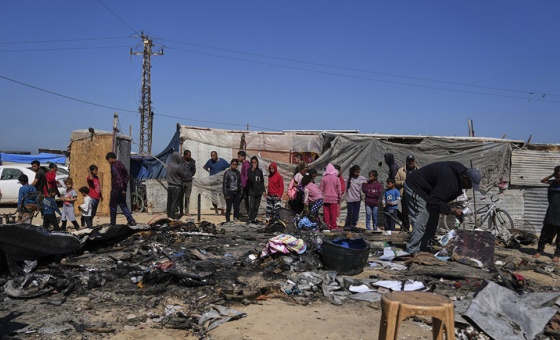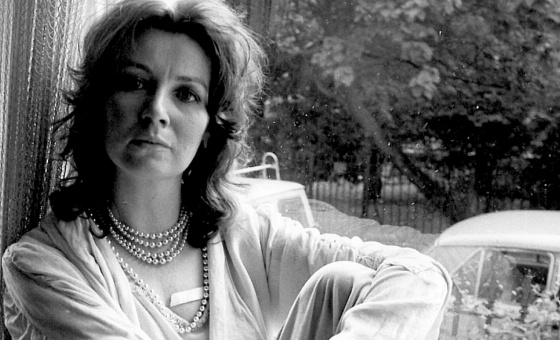This is the last article you can read this month
You can read more article this month
You can read more articles this month
Sorry your limit is up for this month
Reset on:
Please help support the Morning Star by subscribing here
The Communist Party of Germany (KPD) was the only German party to engage in organised resistance to the fascist dictatorship between 1933 and 1945.
The anti-fascist resistance in Germany arose in the 1920s and ’30s.
From the outset it involved people from different backgrounds, with different world views and distinct political convictions.
What was central to the KPD’s struggle during the international financial crisis (1929 to 1932-33) was both the working-class effort to engage in united action and the alliance of all opponents of a threatening fascist dictatorship. The high point of these efforts was the 1932 striving for “Anti-Fascist Action.”
In late May 1932, the KPD created this organisation as a non-partisan mass movement.
It gained its greatest organisational strength from its self-defence against fascist and police terror.
During the summer of 1932 there were large demonstrations in many German cities, which led to the formation of unity committees.
On July 10 1932, there was a conference in Berlin to create a Reich-wide unity committee.
In the following days, Anti-Fascist Action held numerous demonstrations across the country, and in the weeks thereafter it held district conventions in Bremen, Danzig, Dortmund, Dresden, Duisburg-Hamborn, Dusseldorf, Hanover, Cologne, Konigsberg, Leipzig, Mannheim, Mulheim (Ruhr), Weilheim and elsewhere.
Numerous Social Democrats joined the movement, although the executive committee of the SPD forbade any contact between communist and socialist organisations.
In autumn 1932, a wave of strikes advancing anti-fascist slogans swept across the country.
The result was that the fascists garnered two million fewer votes during the November 6 Reichstag election than they had during the July 31 1932 election. Between them, the SPD and the KPD won a relative majority — German monopoly capital found that alarming.
The KPD began to organise resistance on January 31 1933, the day that German fascists ascended to power.
On February 7 1933, a party conference was held in Ziegenhals, outside Berlin.
At the congress, party chairman Ernst Thalmann presented an initial programme for a united front against fascism in power.
It was his last speech as a free man. He was arrested on March 5 1933 and spent more than 11 years in prison.
On August 18 1944, he was executed in the Buchenwald concentration camp on a direct order from Hitler.
During the entire period of fascist dictatorship until 1945, the nazis terrorised the party.
Of approximately 300,000 members, roughly 150,000 were prosecuted and locked up or sent to concentration camps, with 10,000 communists simply being murdered.
Nonetheless, with the support of the Communist International and the Soviet Union, the KPD was the only party to continue resisting, both as emigres and domestically, until the defeat of fascism at the hands of the allies.
However the party was not in a position to free Germany. There were a number of reasons for that — fascist terror, the material corruption of large segments of the population at the expense of others, fascist ideology, particularly anti-communism and racism, the nazis’ abuse of national sentiment and a belief in the lie that the defeat of Hitler would bring the destruction of Germany in its wake.
Nonetheless, the party never stopped organising in preparation for the eventual liberation from fascism.
A KPD conference, the Brussels Conference, took place outside Moscow on October 3-15 1935, with Wilhelm Pieck being elected chairman of the party for the duration of Thalmann’s imprisonment.
The strategic objectives formulated were the disruption of the Hitler regime and the establishment of anti-fascist and democratic conditions under either a proletarian united front government or an anti-fascist popular front government.
The KPD’s Bern Conference took place in Draveil, outside Paris, from January 30 1936 until February 1 1936, ending with a call to mobilise all forces against the danger of war posed by Germany.
The conference also outlined the basics of an anti-fascist and democratic German state.
During the battles of April and May 1945, the members of the KPD’s central committee began to organise anti-fascists for reconstruction from within the German areas occupied by the Red Army.
The best-known incident is that of a group of communists under Walter Ulbricht’s leadership travelling from Moscow and arriving in the Berlin area on April 30.





